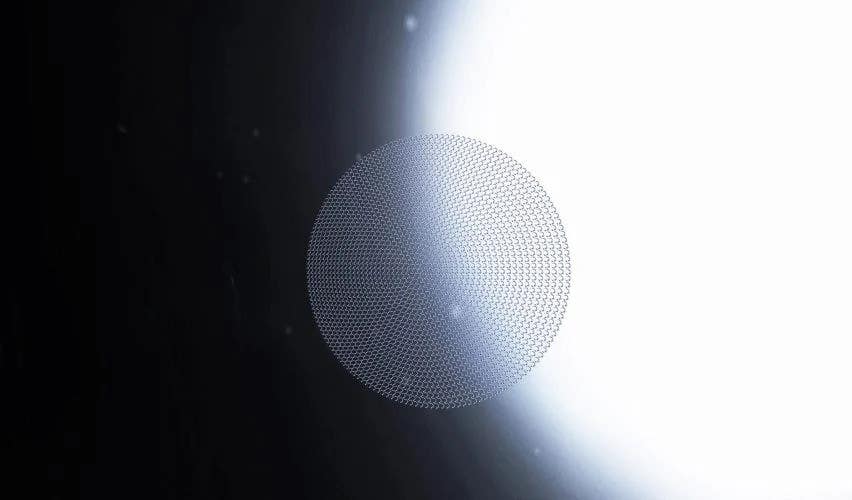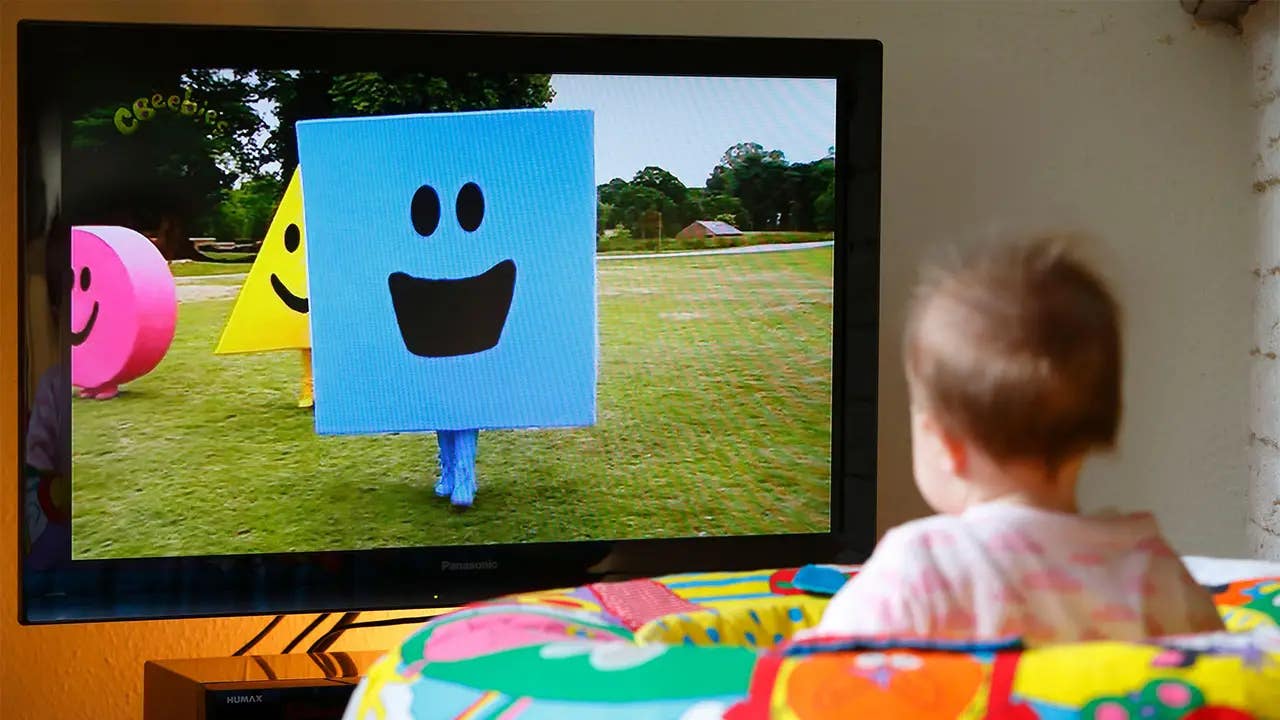MIT scientists believe “space bubbles” can fully reverse climate change
Scientists propose the idea of a multilayer deflective film to be deployed at the Lagrangian Point decreasing the incident sunlight by 1.8%.

[July 11, 2022: Carlo Ratti, MIT Senseable City Laboratory]
The Space Bubbles proposal envisages using frozen spheres to block some of the sun's rays. (CREDIT: MIT)
While addressing climate change necessarily requires lowering CO2 emission on the Earth, other approaches such as geoengineering could supplement such efforts if current mitigation and adaptation measures turned out to be inadequate for reversing the ongoing climate change trends. In particular, solar geoengineering—a set of technologies aiming to reflect a fraction of sunlight coming to the Earth—has been theoretically proved to be a valuable solution for supplementing current efforts for CO2 emission reductions.
Solar geoengineering is one of the least extensively researched topics in climate science technologies. Most research efforts have concentrated on dissolving reflective chemical components in the troposphere or stratosphere that would offset the incoming solar radiation, facing issues of irreversibility and further greenhouse effects. Space-based geoengineering provides an opportunity to solve the problem with no direct effect on stratospheric chemistry.
James Early proposed the idea of a multilayer deflective film to be deployed at the Lagrangian Point (L1, see Figure 1a below) in between the Sun and the Earth decreasing the incident sunlight by 1.8%. Roger Angel, building on Early’s research, investigated the idea of a swarm of small spacecraft unfolding smaller shields, proposing an early feasibility plan for the technology.
The main challenges associated with the above proposals are the complexity of pre-fabricating a large film, and transporting and unfolding it in outer space. Other ideas include creating a cloud of dust from asteroids at L1, which poses the problem of keeping the material confined. Among the issues with the existing approaches: the amount of material needed, the difficulty of in-space fabrication, and the non-reversibility of such geoengineering projects.
In general, most research has not moved from a rough feasibility study stage yet. In this proposal, we are bringing together an interdisciplinary team of MIT scientists to do a next level of feasibility.
Related Stories
As a working hypothesis researchers propose to explore the idea of shielding solar radiation by deploying a set of bubble rafts composed of arrays of interconnected small inflatable bubbles (see Figure 1b) close to the Lagrangian Point L1 in between the Sun and the Earth. They believe that inflating thin-film spheres directly in space from a homogeneous molten material–such as silicon–can provide the variation in thickness that refracts a broader wave spectrum and allows us to avoid the necessity of launching large structural film elements.
Spheres can be directly manufactured in space, optimizing shipping costs. Moreover, as bubbles can be intentionally destroyed by breaking their surface equilibrium, this would make the solar geoengineering solution fully reversible and significantly reduce space debris. Please note, however, that they feel the bubble raft is only a working hypothesis at the moment.
Interdisciplinary in its nature, the project involves an array of research problems in a number of disciplines, from the optics and mechanics of thin-films in space, to the impact of shading on the Earth, to the public policy implementation. Subsections below present the major challenges and preliminary strategies of tackling them:
Material
A fundamental phase in this project is selecting the right material and technology to fabricate and maintain thin-film spheres in outer space conditions. In the researchers preliminary experiments, they succeeded at inflating a thin-film bubble at a pressure of 0.0028 atm, and maintaining it at around –50°C (to approximate space conditions of zero pressure and near-zero temperature, see Figure 1c).
Figure 1 – (a) L1 Lagrangian point location as described in [5] (b) Bubble raft on a water surface (courtesy University of Wisconsin) (c) Frozen ~20 mm-diameter thin-film bubble at 0.0028 atm (experiment carried out at MIT) (CREDIT: MIT)
Further research will investigate the use of other types of low vapor-pressure materials to rapidly inflate and assemble bubble rafts (including silicon-based melts, and graphene-reinforced Ionic Liquids which have ultra-low vapor pressures and relatively low densities); key design metrics include the viscous, interfacial thermal properties of the bubble formers during inflation as well as the optical and structural properties of the bubble rafts when exposed to sun radiation.
Mass density and cost efficiency
Researchers plan to study whether a bubble-based shield is mass-efficient compared to other proposed shading solutions. As thin fluid spheres are inflated, the minimal thickness of the liquid film forming the shell can theoretically be as low as 20nm due to surface disjoining pressure and to the Marangoni effect. However, in order to deflect solar light, the shells’ thickness should be comparable to solar wavelengths (i.e. on the order of 400-600 nm). Their initial calculations, considering liquid- based spherical bubbles, suggest that the resulting raft’s expected mass density would be <1.5 g/m2, on par with the lightest shield proposed by Angel.
MIT researchers proposes 'Space Bubbles' to shield Earth from the sun's rays to combat the devastation (CREDIT: MIT)
Position and stabilization of the raft
While at the L1 Lagrangian point gravitational forces from the Earth and the Sun cancel out, a wide and thin bubble raft would be significantly exposed to solar radiation pressure, suggesting that the optimal location should be identified slightly closer to the Sun, approximately 2.5 Gm from the earth. An active stabilization mechanism is needed and will have to be designed, preferably through geometry modification.
Shading capacity
Previous geoengineering research suggests that in order to reverse the effects of climate change incoming solar radiation should be reduced by 1.8%, even if smaller percentages would be enough for supplementing global warming mitigations initiatives on Earth. A solar radiation reflection model will be built and used to determine the optical properties of the bubble raft, while a deeper analysis with climate models will identify the desired solar radiation reduction fraction.
This geoengineering idea would feature inflatable bubbles, organized in a circular shape the size of Brazil, which would sit between the Earth and the sun, blocking radiation from hitting our planet. (CREDIT: MIT)
Space production and delivery
Possibly a significant advantage of a bubble raft is the possibility of in-situ assembly using space- based fabrication methods. Bubbles can be rapidly inflated inside the production unit, then rapidly frozen and released into zero- pressure and low-temperature space. The coordination of the process of delivery, raw material transfer, inflation and the coordination of the resulting bubble rafts will be studied. Moreover, novel ways of shipping the material from earth will be investigated, including magnetic accelerators (railgun) as already proposed in the literature.
Maintenance and reversibility
If a bubble raft is no longer needed, sheets of thin spheres are easy to destroy by breaking their surface equilibrium and collapsing them from their metastable equilibrium point to a lower energy configuration. This minimizes debris compared to other proposed approaches, and makes it safer and more resilient in case of impacts with other objects. The maintenance of such a fragile shield is a challenge, and an effective replenishment rate will be studied to ensure the shield maintains its size, together with strategies to guarantee a smooth end-of-life transition.
The team notes that if we deflect 1.8 per cent of incident solar radiation before it hits our planet, we could fully reverse today's global warming. (CREDIT: MIT)
Impact on Earth’s climate and ecosystem
Despite the remote location from Earth’s atmosphere, some studies suggest that complex phenomena may arise on Earth’s climate as a consequence of the reduction of solar radiation, such as the weakening of extratropical storm tracks. This aspect will be further investigated with different solar radiation reduction fractions. Furthermore, a phase-out approach will be designed, to avoid an Earth’s ecosystem shock of a sudden termination of the geoengineering program when it will no longer be needed (studies identify the needed lifetime in a range from 50 to 200 years.
Public policy implications
How to get the most synergies between emission cuts and solar geoengineering is a public policy problem that needs careful investigation. Moreover, research will be done on the following topics: how to overcome political opposition and political fear; how to avoid what has been referred to as a “moral hazard”; how to make the project economically sustainable; how to open-source the solution design for a widespread engagement.
In the next phase of the project, formal analyses and simulations of the aforementioned topics will be conducted, together with preliminary laboratory production experimentation. If indeed the bubble raft concept does turn out as the most valuable solution (from cost and mass density considerations), further research will be needed for improving the design, fabricating a test bubble raft in lower orbit, and, if successful, test the deployment in outer space.
In its largest extent, as discussed by Roger Angel, the system could offset 100% of the effect of greenhouse gases in the atmosphere. We believe that once a technical solution is identified, implementation could happen before the end of the century, when the most severe consequences of climate change are currently predicted. In terms of cost, an initial estimate was suggested by Roger Angel as approximately 0.5% of global GDP over 50 years; furthering feasibility as proposed here will help us arrive at more accurate estimates.
In short, researchers believe that advancing feasibility of a solar shield to the next level could constitute a supplementary plan for a low carbon transition on Earth–and in any case help us make more informed decisions in the years to come should geoengineering approaches become urgent.
For more environmental news stories check out our Green Impact section at The Brighter Side of News.
Note: Materials provided above by MIT Senseable City Laboratory. Content may be edited for style and length.
Like these kind of feel good stories? Get the Brighter Side of News' newsletter.
Joseph Shavit
Head Science News Writer | Communicating Innovation & Discovery
Based in Los Angeles, Joseph Shavit is an accomplished science journalist, head science news writer and co-founder at The Brighter Side of News, where he translates cutting-edge discoveries into compelling stories for a broad audience. With a strong background spanning science, business, product management, media leadership, and entrepreneurship, Joseph brings a unique perspective to science communication. His expertise allows him to uncover the intersection of technological advancements and market potential, shedding light on how groundbreaking research evolves into transformative products and industries.



